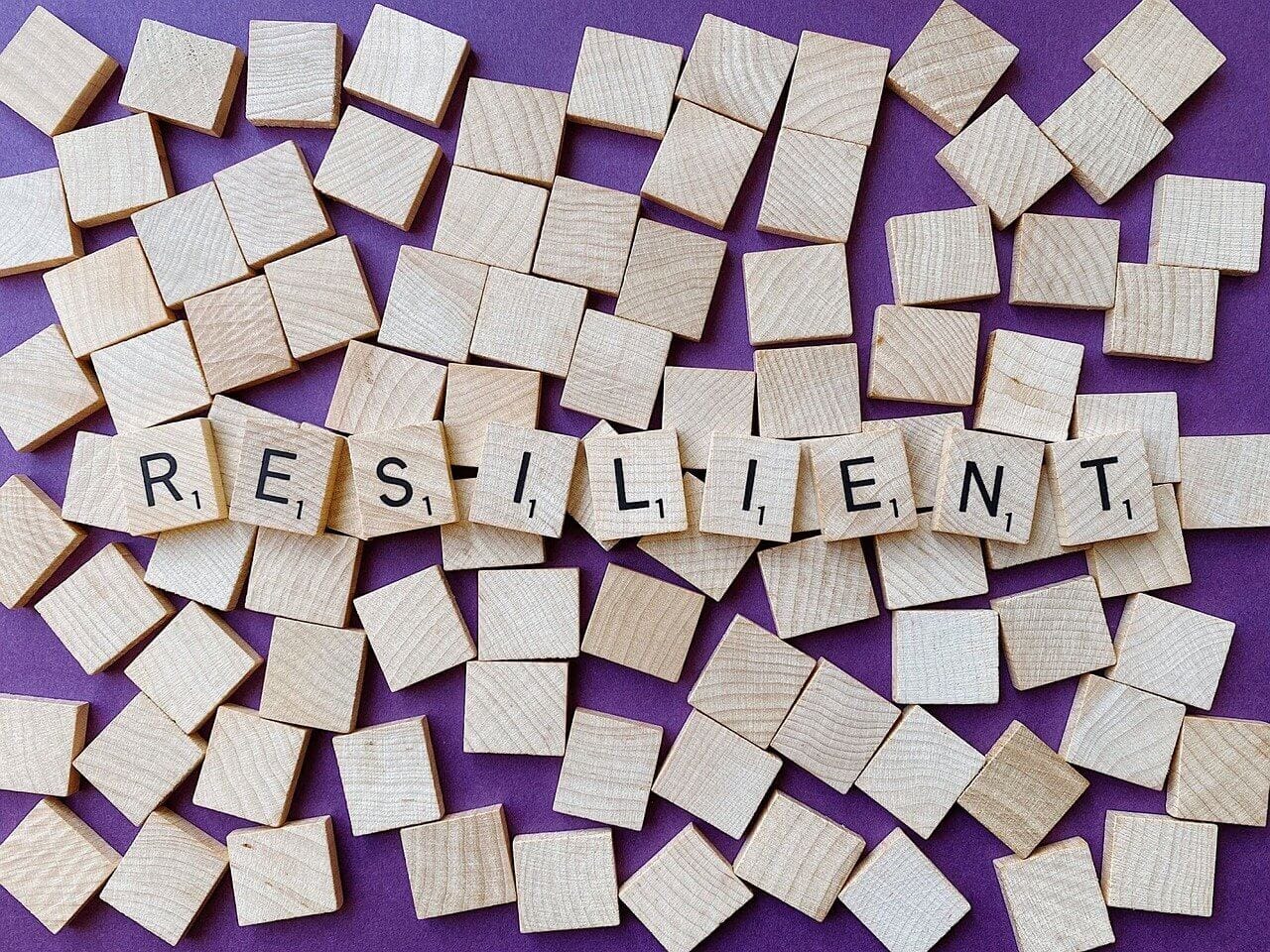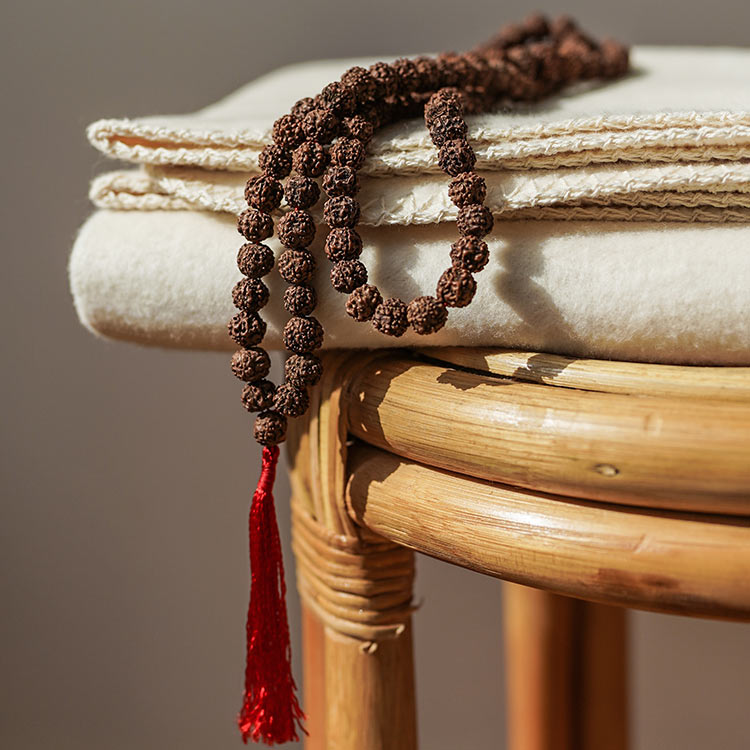
Resilience through Yoga: What You Need to Know
Many people experience stressful situations in their lives. Whether it's a challenging job, challenging family circumstances, or other blows of fate knocking on the door – the more stable a person is within themselves, the easier it is to cope with these difficult situations in everyday life.
There are various factors that help you achieve greater resilience. In the following article, we'll explain the best tips you can use to live a better life and gain the strength to get closer to your goal.
What does resilience mean?
First and foremost, we'd like to explain the term resilience. The word comes from developmental psychology and means something like "mental, psychological resilience." It refers to the human strength or ability to cope with difficult situations. If someone is resilient, they maintain optimism despite difficult challenges. Thoughts can occasionally slip into the negative. Feelings can also turn into sadness, anger, or fear – yet a resilient person always manages to focus on the good things in life.
How can you become more resilient?
There are various factors that play a role and enhance the ability to be resilient.
1. Social network
One of the most important factors for resilience is your social environment. Those who have good, deep friendships can handle difficult situations and stress more easily. Therefore, it's crucial that you cultivate positive friendships and focus on them. Of course, you shouldn't forget yourself and your needs.
2. Acceptance of the past and the present
There are certain things you can't change, so it's crucial that you let them go. Many people find it difficult to consciously let go and embrace acceptance. Nevertheless, this is a key factor that builds resilience. Those who are constantly fighting to change things that cannot be changed consume an extraordinary amount of energy – which is then naturally lacking elsewhere. Coaching can help you refocus on yourself and let go of difficult issues and negative thoughts from the past. This strengthens positive emotions.
3. Live a mindful life
The more mindful you are, the easier your life becomes. Being mindful means always being aware of the moment. You focus on what's happening right now. You don't think about the past or the future. You'll notice that your life changes drastically and you suddenly experience much more relaxation. This applies to work, eating, showering, and walking—mindfulness is the key to more happiness, more acceptance, and more resilience. Furthermore, your joy in life increases significantly when you live more in the moment.
4. Self-efficacy
Those who know that their actions have an impact on their own life and the lives of others feel more gratitude for existence. You can easily implement this point. For example, when you're at the checkout, smile at the clerk. You'll see that they will most likely return the smile. This strengthens your sense of self-efficacy and helps you understand that your actions have an impact on the world and its inhabitants.
Other important factors are:
- Strengthen self-confidence
- Solution-oriented action
- Take responsibility for your own actions
- Future-oriented thinking
- Optimism and joy of life
Meditation as a helpful method for more inner strength
To bring the lightness of a child into your life, you should focus on yourself. Only then can you regain more vitality. We often become numb over time and focus on our jobs and other successes. However, as long as we don't heal our inner child and dissolve old beliefs, we will struggle to be happy and content.
Resilient people are characterized by an inner calm that doesn't just happen by chance. Of course, there are those who are simply calmer by nature, while others, with the right method, manage to find more peace within themselves. This is particularly successful through daily meditation practice.
Thanks to guided meditations from various apps, you can explore various topics. These include:
- Self-love
- Mindfulness
- Healing the inner child to promote joy in life
- Dissolution of old belief patterns
Many people find meditation difficult at first because the silence is almost unbearable. Therefore, it's a good idea to start with guided meditations. The instructions are so simple that anyone can follow and relax. As your mind calms and your thoughts become more organized, you automatically become more resistant to stress . You also learn to sense yourself better each time. This also has an impact on stressful everyday life. With a little practice, you'll sink deeper and deeper and can achieve wonderful, profound states of relaxation and a higher level of health.
Meditation is ideal for relaxing the body, mind, and soul and immersing yourself in new worlds. It also lends a deeper meaning to one's existence .
How can yoga help you become more resilient?
The asanas from Buddhist teachings make a huge difference in one's awareness, body awareness, stress management, and resilience. There are specific exercises that can have a profound effect.
The goal of these exercises is to help you find yourself and endure this state. We often try to escape from situations because we can't bear the feeling. Yoga strengthens our ability to deal with stressful emotions in a crisis.
Unlike Yin or Hatha Yoga, this approach focuses on strengthening the fundamental attitudes of self-confidence, optimism, and acceptance. If you're experiencing insecurities, you can book a special Resilience Yoga course.
The best exercises for more resilience
1. The Mountain – Tadasana
In the Tadasana pose, you stand upright, your body straight, and your hands facing forward. It's important to feel your connection with Mother Earth. Then, inhale to your core and let the breath flow through your legs into the earth. Repeat this breathing exercise a few times. Those who incorporate these practices daily can reduce the likelihood of mental illnesses like burnout.
2. Moon Variation – Ashta Chandrasana
For this pose, take a lunge. Your right leg is at a right angle, while your left leg is extended backward. The heel of your left foot goes toward the floor, while you stand firmly on the floor with your right leg. Keep your hips straight, and bring both arms over your head with your palms together. Enjoy the position and feel the stability. After a few breaths, switch sides.
3. Child's Pose - Balasana
The Balasana asana is very popular in many yoga styles. This is because it has a wonderful effect on the body. You first sit in the heel position and then let your upper body fall forward until it touches the floor. Your arms are gently stretched behind you. Focus on your breathing and breathe deeply into your core.
Would you describe yourself as resilient? What do you do to be more resilient in life and perceive common problems as less serious?
Share






